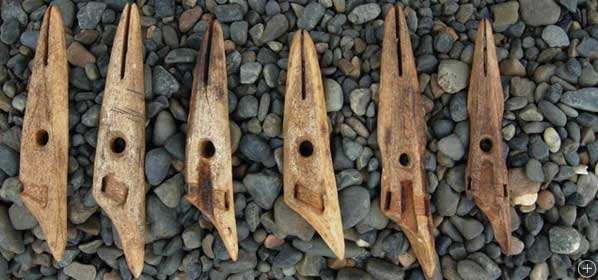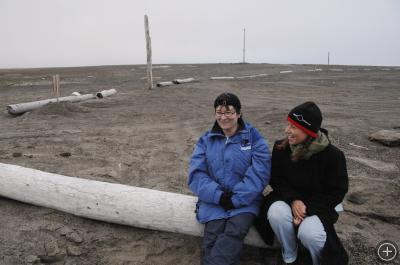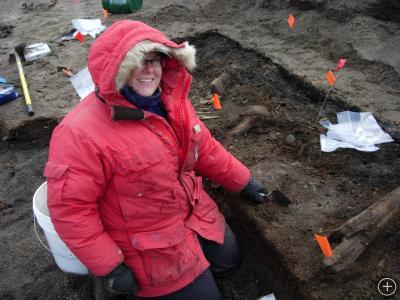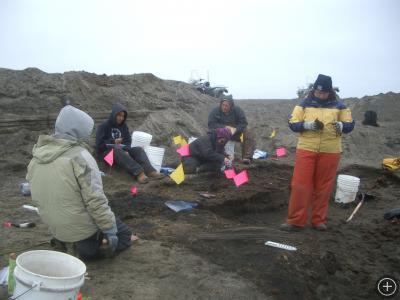
Racing to recover and study ancient remains in Alaska before they’re washed out to sea
One of the largest questions in northern archaeology concerns the Thule people, ancestors to modern Iñupiaq people. How did the Thule people come to be in Alaska? Why did they spread rapidly to Greenland and Canada? Anne Jensen and Laura Thomas are part of a project that’s helping to answer these questions. They’re also working to save ancient remains from washing into the sea at the historic settlement of Nuvuk. Global warming is melting the sea ice, exposing more open water with waves that hit the coast for longer periods of time, especially in the fall. At the same time, storms and storm surges are fiercer. The result is an increase in erosion, which is causing more skeletal human remains to surface.
People abandoned Nuvuk in the 1940s. Most of it has already been lost to the ocean, but waves and ocean storms are uncovering graves, some 1,000 years old or older. Under the direction of Jensen and Thomas, local students have been working each summer to save their ancestors from an unwanted reburial at sea. With the encouragement of the Iñupiaq Elders, scientific studies are carried out before reburial at a protected site. These studies may help in understanding Thule origins and their adaptations to climate change.















